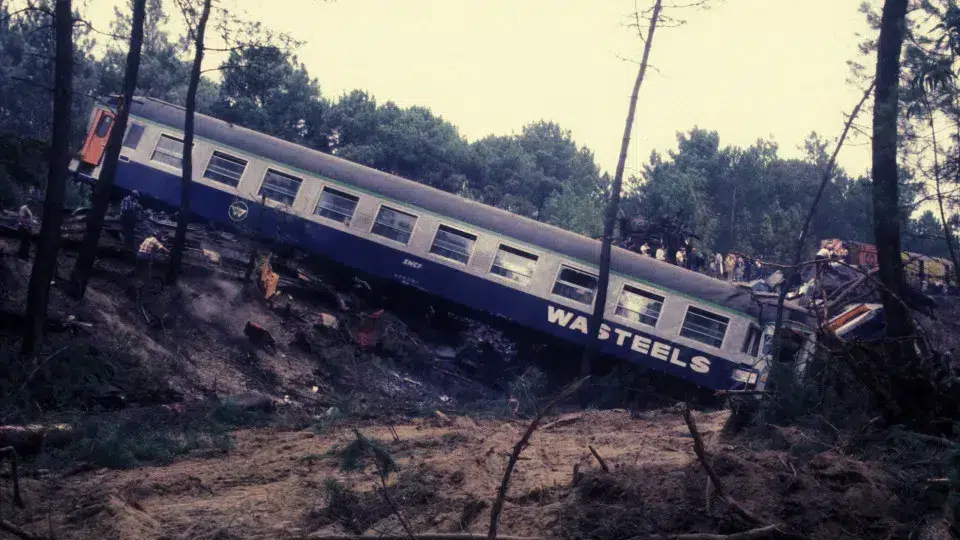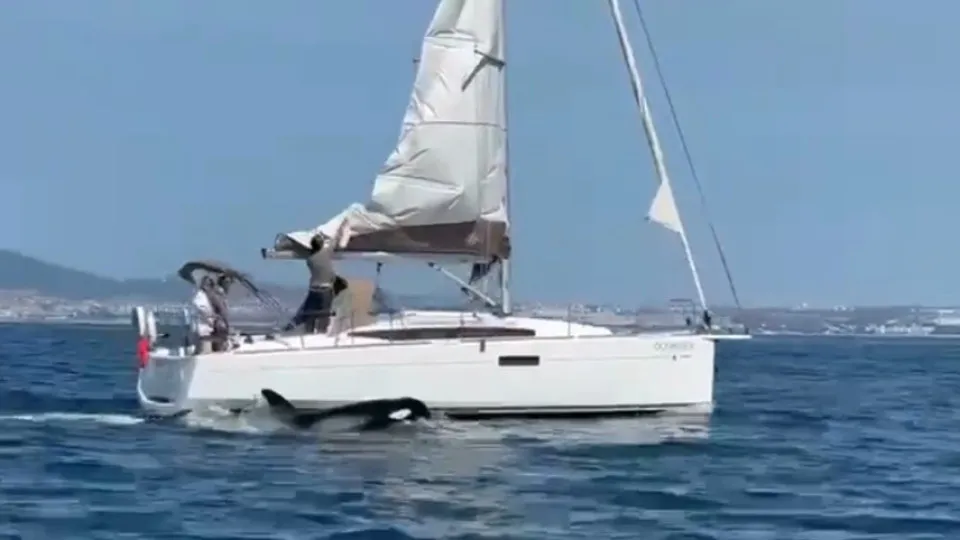
At 18:37 on September 11, 1985, Portugal experienced its deadliest railway disaster, marking one of the nation’s most tragic events.
Two trains collided at approximately 100 kilometers per hour at the Moimenta-Alcafache halt on the Beira Alta Line, situated in the Moimenta de Maceira Dão parish, Mangualde municipality, Viseu district.
The violent collision immediately destroyed the locomotives and several cars from both trains, igniting multiple fires due to fuel present in the carriages’ heating systems.
The newspaper A Comarca de Arganil, in 2019, reported that “since the materials used in the carriages were not flameproof, the fire spread quickly, producing large amounts of smoke.”
Panic ensued. Passengers who survived the initial impact attempted to escape as quickly as they could. Many people, including children, were trapped in the wreckage. Some were rescued by fellow passengers, but many could not escape in time and perished due to the flames or smoke inhalation.
The exact number of fatalities from the accident remains unknown, although estimates exceed 100.
Mistakes Leading to the Tragedy
The causes of the accident, described at the time by the newspaper ‘O Primeiro de Janeiro’ as ‘The Alcafache Tragedy,’ were linked to a series of errors.
National Geographic, which covered the collision in a 2024 report, detailed that at 15:57, a Sud-Express train bound for Paris-Austerlitz departed from Campanhã, Porto, carrying about 400 passengers, mostly emigrants returning from holidays in Portugal. It left with a 17-minute delay.
Nearly an hour later, at 16:55, a regional train left the Guarda station heading to Coimbra, on schedule. “Since the Sud-Express was heading towards Vilar Formoso, crossing the central-interior region of Portugal, both trains were to pass the same section of the Beira Alta Line, a central railway axis in the region that mostly features a single track,” explains the same publication.
The Sud-Express reached Nelas at 18:19. Meanwhile, the regional train arrived at Mangualde station, a few kilometers away, four minutes later. Here, considering the international train’s delay, the regional train should have waited. But it did not.
“Two trains running on the same single-line track at the same time is a frightening certainty of a head-on collision: without any means to communicate with moving trains at the time, passengers and staff aboard both vehicles were heading toward an inevitable disaster; and this occurred at 18:37, when the international 315 and regional 1324 collided with a tremendous crash and violence, derailing over dozens of meters in a forested area,” reports National Geographic.
The firefighters who participated in the rescue operation described – and still describe – the scene as a “scene of absolute horror.”
All hospitals in the region, particularly in Viseu, became overcrowded, and due to severity, some victims were transported to Porto or Coimbra. The Portuguese Air Force and Army were actively involved in the operations, including rescuing and airlifting the injured.
Three Days of Mourning and Accountability
Ramalho Eanes, then President of the Republic, visited the accident site and the injured in the Viseu hospital that same night.
Eanes, aware of the gravity and the haunting memories for a country that had moved away from dictatorship only a decade earlier, declared that Portugal had the right to know what had happened.
The images were broadcast on television that very night, made possible only because the Head of State ensured it.
In response to these images, hundreds of citizens went to hospitals to donate blood.
Prime Minister Mário Soares announced three days of national mourning and an inquiry to ascertain the facts.
The inquiry quickly determined human error as the cause of the accident. Someone had failed to communicate the Sud-Express delay. However, after four years of trials – involving four defendants – no one was held accountable.
National Geographic notes that “without written or electronic records,” it was each defendant’s word against the other, leaving the judge with no option but to acquit them.




